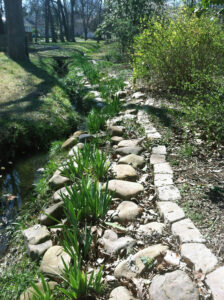
Fast running water can erode the banks of a stream quickly. While keeping the bank planted is important, I wanted to reduce the amount of weed-eating necessary to keep the grass (and weeds) down and also make the stream bank more attractive. I opted for lining the stream edge with large landscaping stones and mixing in irises, daylilies, and even some daffodils.
The stream in my back yard
A small intermittent stream runs through my back yard. It only has water during heavy rains, but when it does, the water runs fast and often extends about 6 feet out on either side. With so much fast-moving water, the banks of the stream are prone to erosion.
I have two small wooden bridges that allow me to take the mower across the stream, and one of these was washed downstream two years ago. I have since sunk the ends of the bridge in concrete so that won’t happen again, but that gives you an idea of how fast the water was moving.
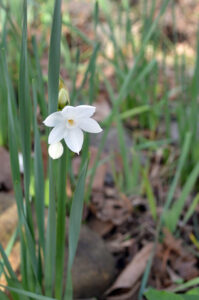
Plants to retain the soil
The roots of plants help hold the soil together, reducing the effects of erosion. I left some grass at the very water’s edge where the force of the water tends to hit heaviest. Above the vertical sides is where I started strategically placing large stones and planting the flowering plants.
It is still a work in progress as this is only the second year that I have been working on this project. The iris, daylilies and daffodils make for an attractive display along the water’s edge and I really like the look of the large stones.
Rocks for landscape texture and to help protect the plants
While the stones provide erosion protection, they also add a visual effect that I really like. Once the plants fill in the voids between the rocks, the effect should be very much like a natural stream lined with rocks and plants.
I was very fortunate to be able to get so many stones for a good price. A local landscaping company went out of business and sold off the stones for about 1/3 of the usual cost.

Mistakes to Avoid
This was a learning process to figure out when and how to add new plants and remove the weeds. Here are some tips from my experience:
- Don’t plant anything right before a heavy rainstorm – if enough rain comes down, the soil around the plant will be scoured away
- Don’t pull up all of the weeds in a particular spot until you have some plants with established roots in the same area.
- Keep an eye on how the water is reacting and adjust your rock placements as appropriate.
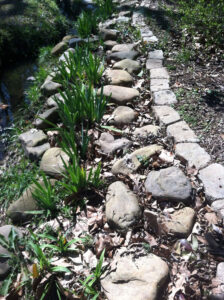
Plans for the future
I plan to keep adding different colors of irises until the majority of the soil is covered. I also want to add creeping phlox. The phlox will have a shallow root system, but it should cover more of the exposed soil, helping to keep it in place. Creeping phlox is nearly evergreen here in Mississippi, so the phlox will help keep the side of the stream more attractive all year round.
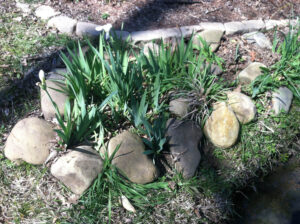
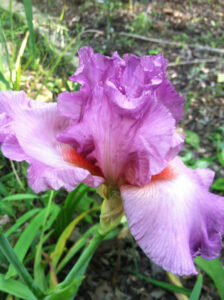
[GARD]
